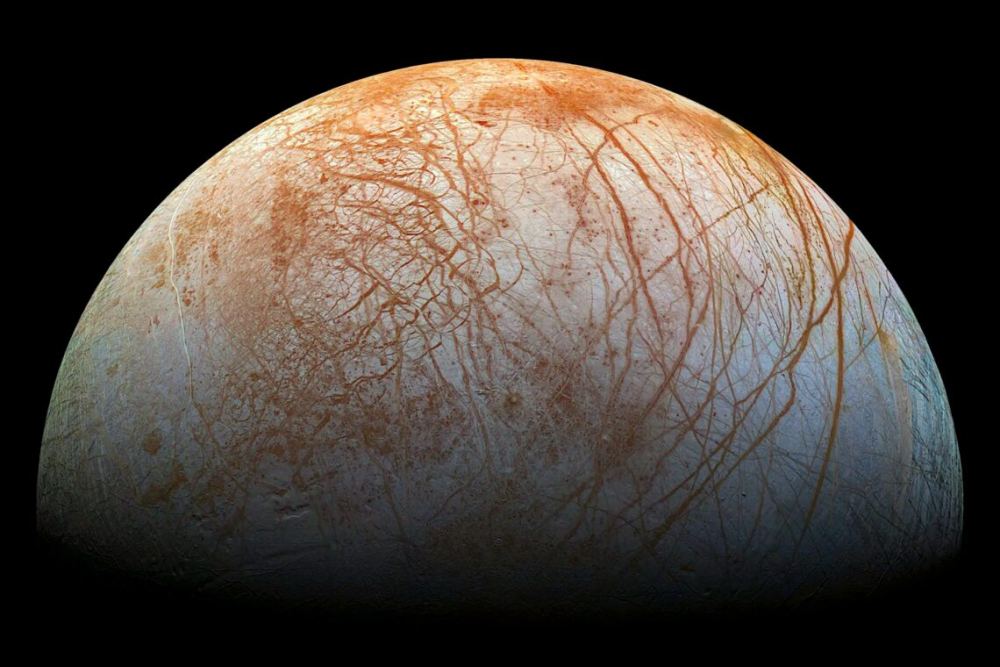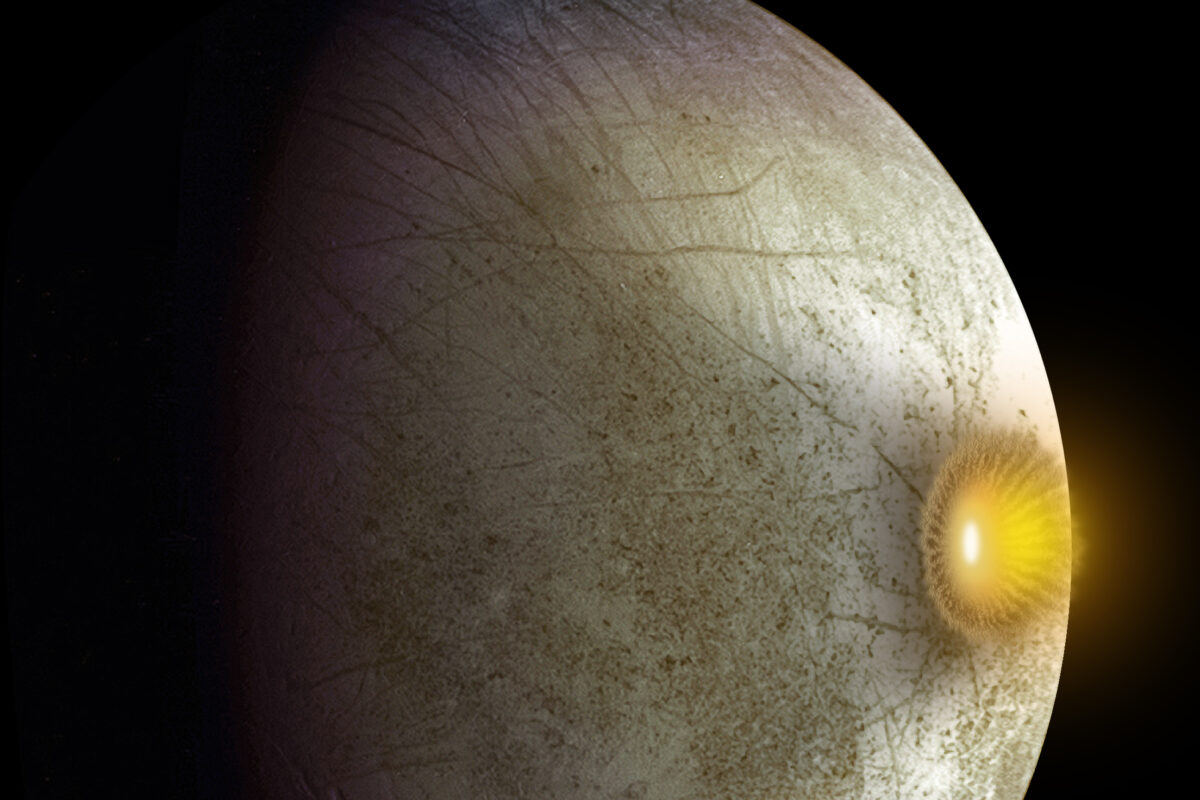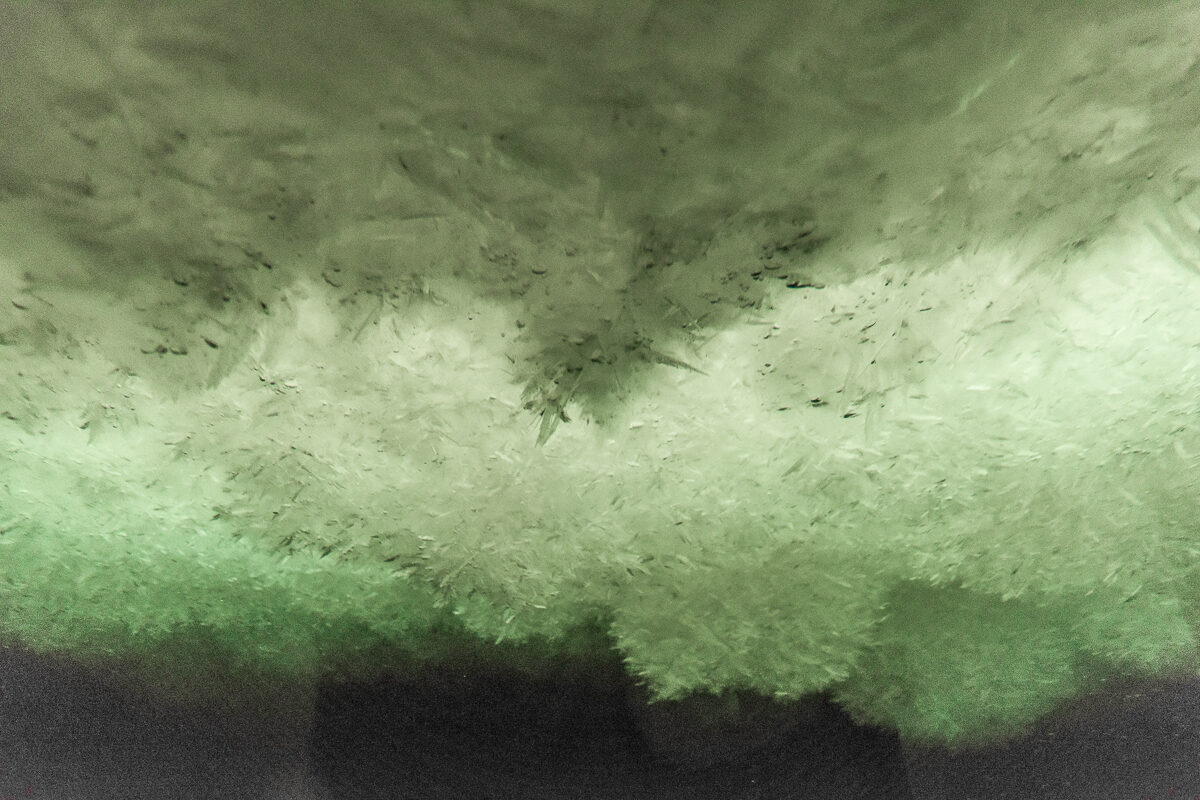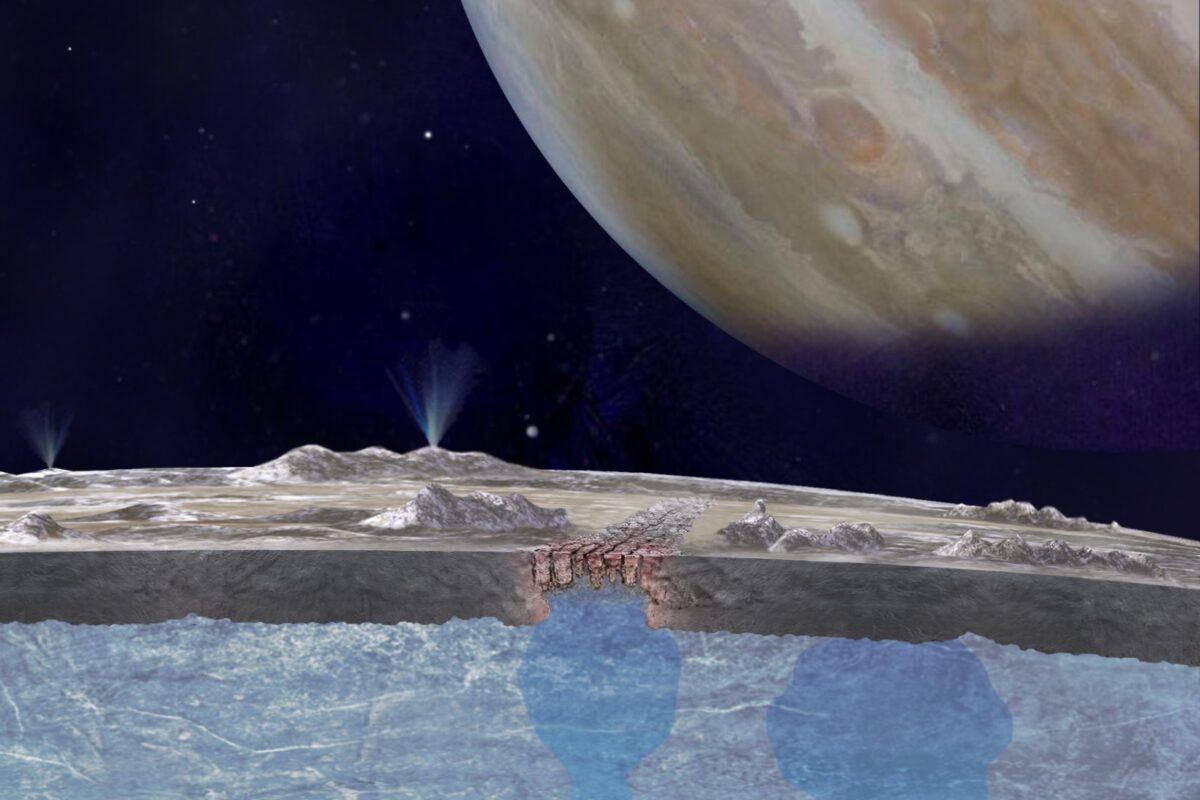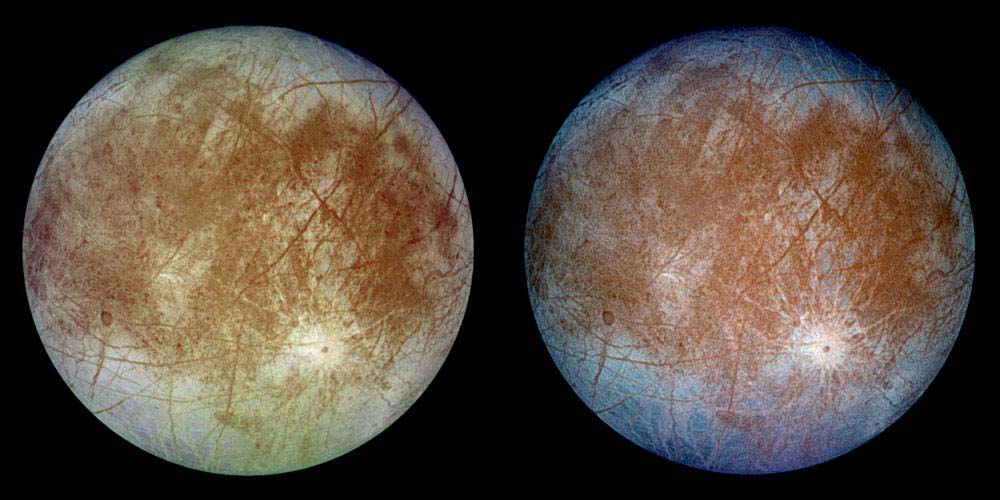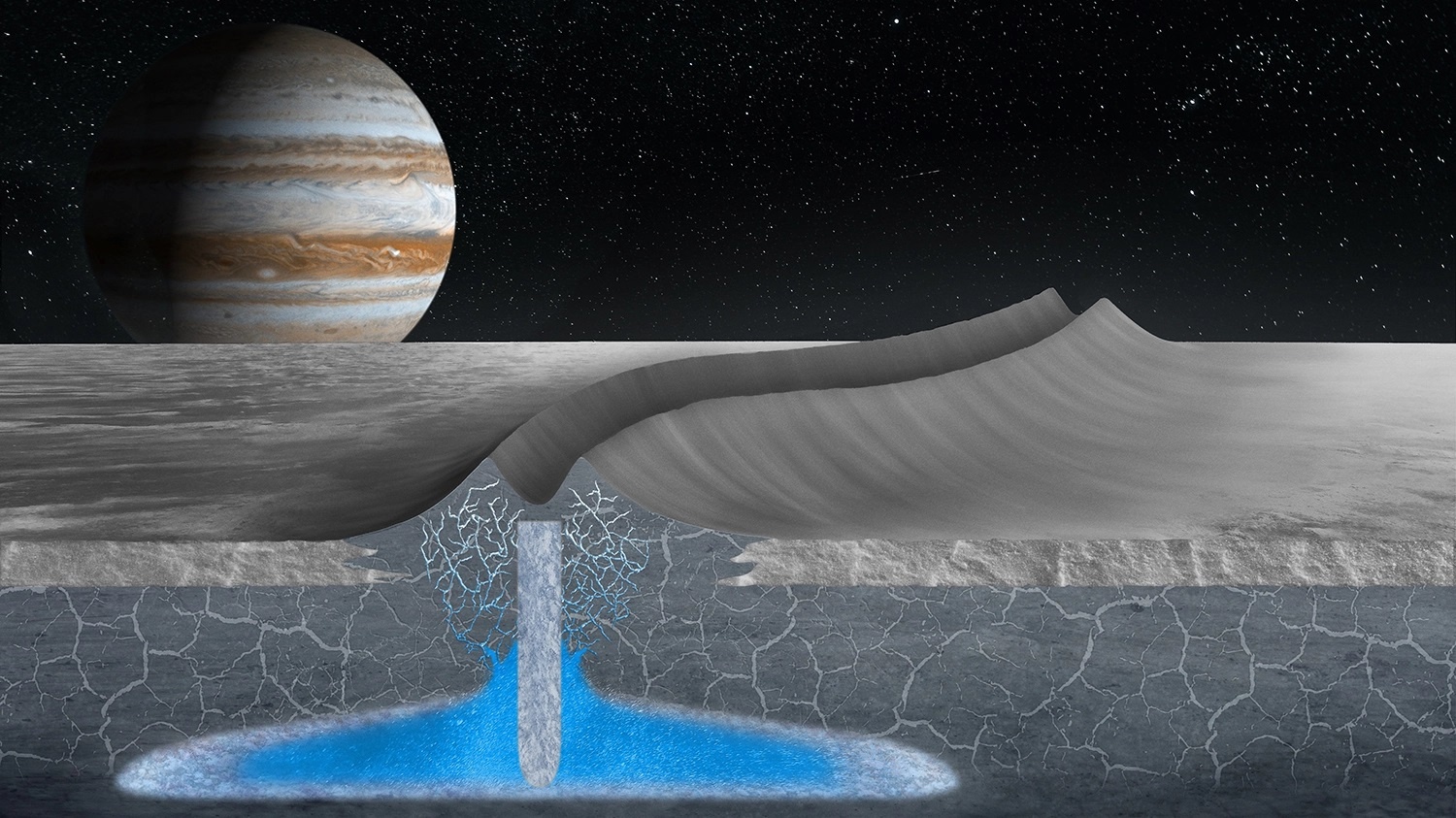Jupiter’s second Galilean moon, Europa, is one of the most fascinating planetary objects in our Solar System with its massive subsurface ocean that’s hypothesized to contain almost three times the volume of water as the entire Earth, which opens the possibility for life to potentially exist on this small moon. But while Europa’s interior ocean could potentially be habitable for life, its unique surface features equally draw intrigue from scientists, specifically the large red streaks that crisscross its cracked surface.
Continue reading “Europa Could be Covered in Salty Ice”Europa Could be Covered in Salty Ice
